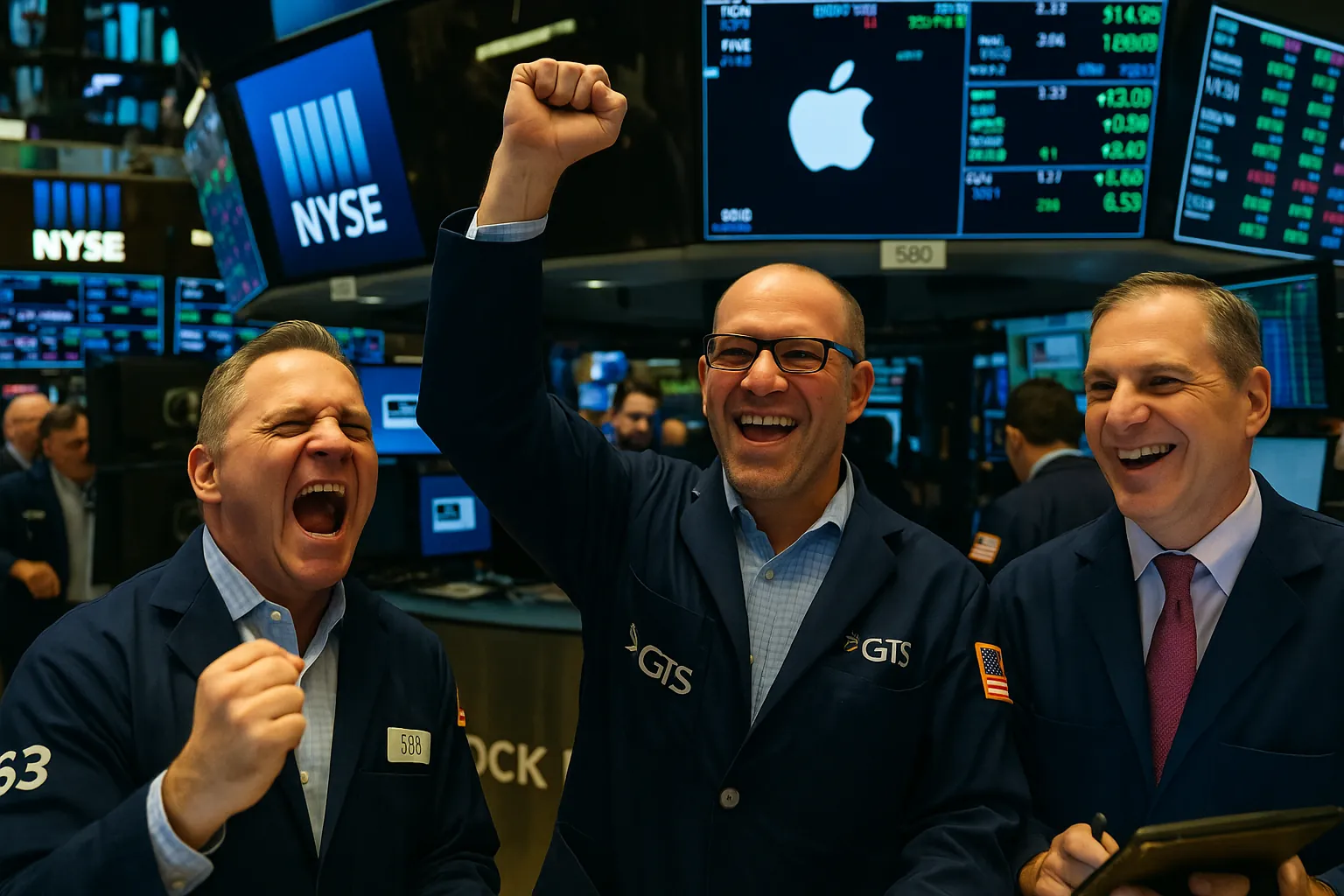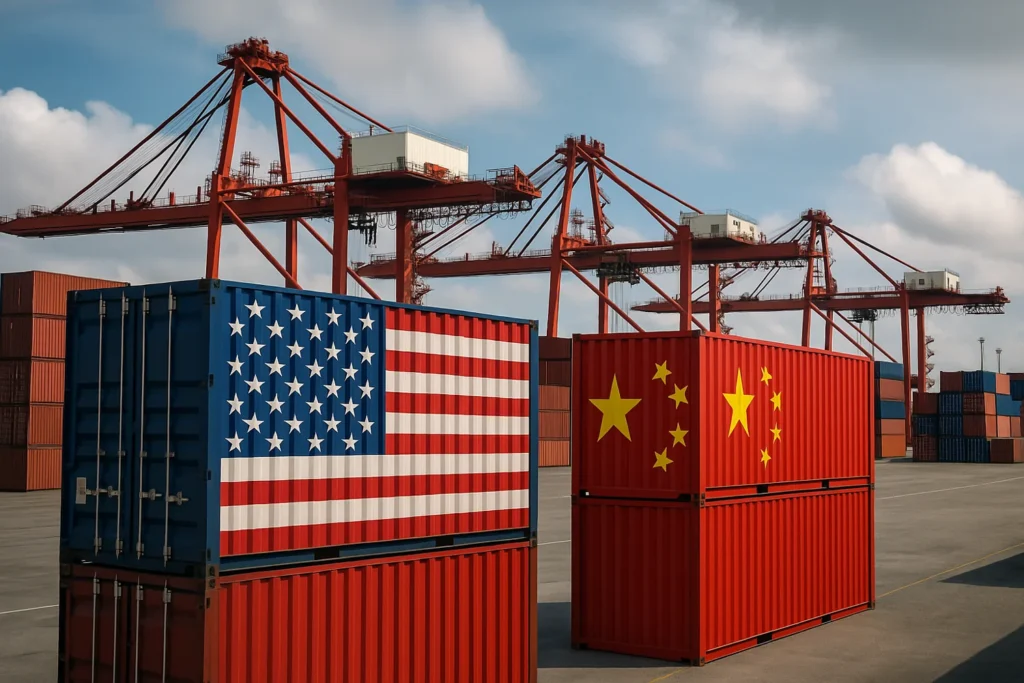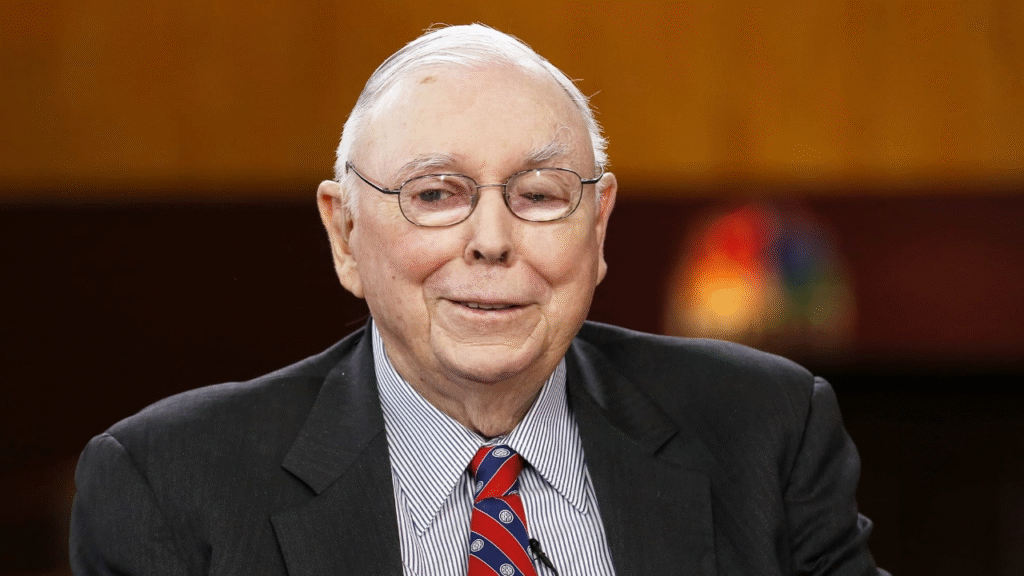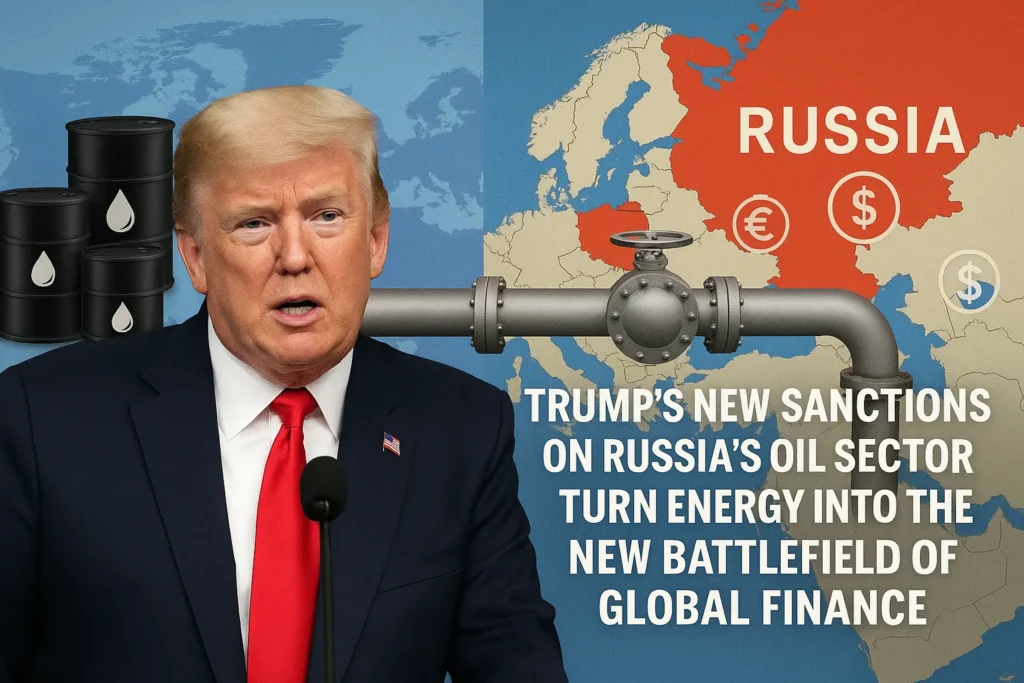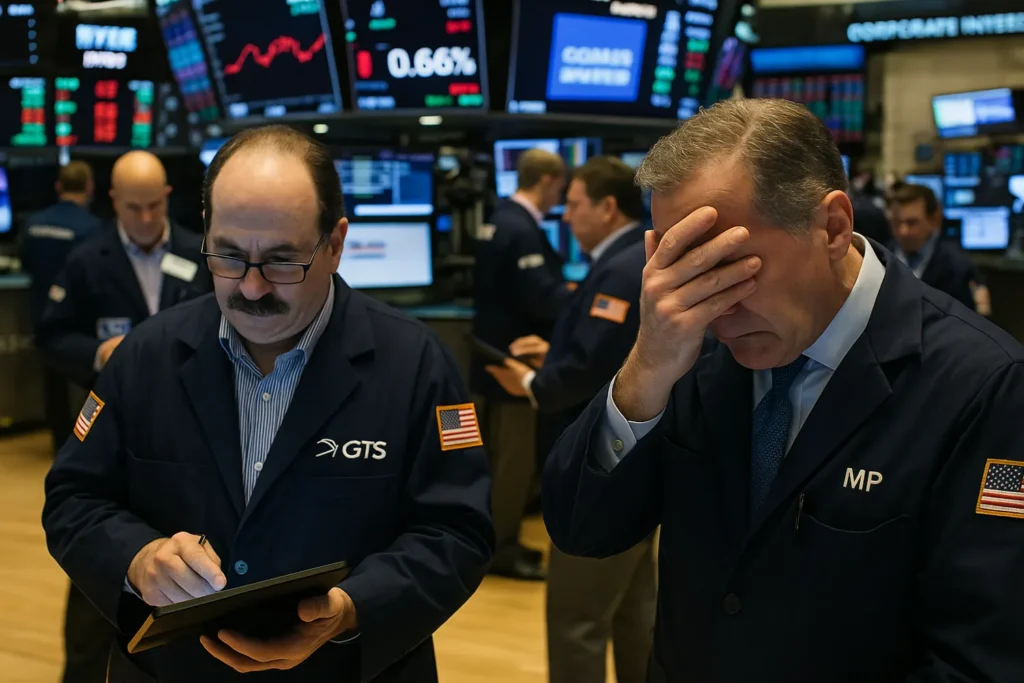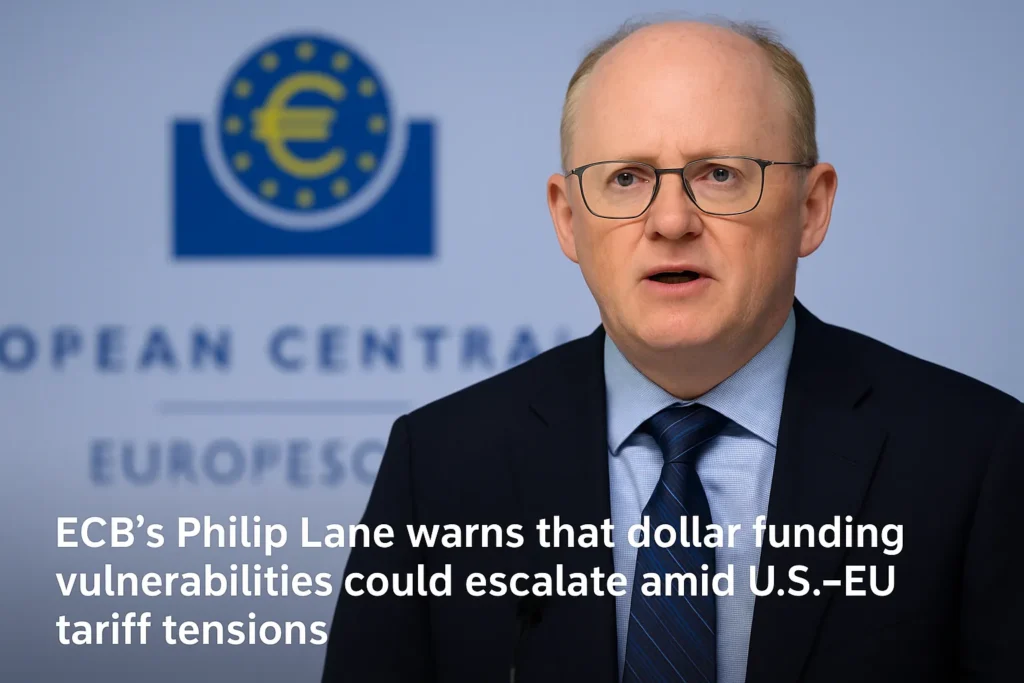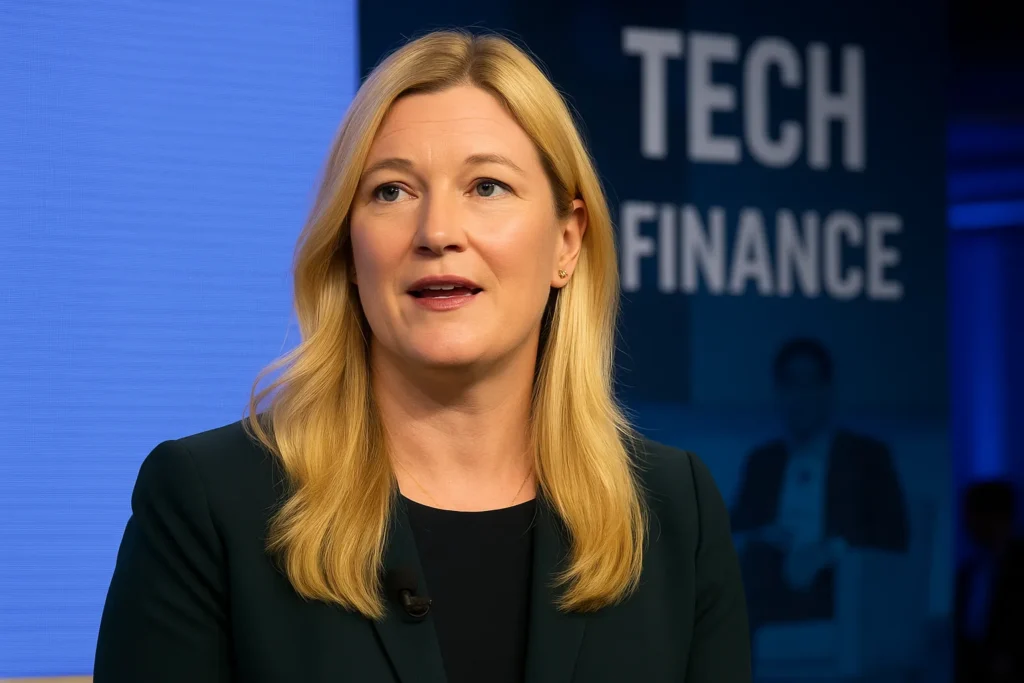Wall Street record highs are back in the headlines, and not by accident. The S&P 500 and Nasdaq broke fresh peaks even as the U.S. government teeters on the edge of a shutdown. Investors are betting big — not on Washington’s discipline, but on Silicon Valley’s promise. Artificial intelligence has once again become the rallying cry of market faith, a narrative powerful enough to eclipse political dysfunction.
Context: a government at an impasse
The U.S. federal government faces another budget gridlock. As lawmakers spar over spending priorities, the threat of a prolonged shutdown hangs over agencies and public workers. Yet, in stark contrast to 2019’s panic, markets are largely unmoved. The S&P 500 surged past 5,500, and the Nasdaq pushed to record territory.
Tech giants led the charge: Nvidia, Microsoft, and Amazon each logged multi-percent gains, buoyed by relentless demand for AI chips and cloud infrastructure. Even after a modest Dow Jones dip, the mood on Wall Street remained defiant. Traders seemed to shrug at Washington’s paralysis, clinging instead to what they see as unstoppable innovation.
Oppositional argument: when hype blinds judgment
But the euphoria hides fragility. Betting on AI as an all-weather hedge feels reckless when fiscal uncertainty looms. Wall Street record highs tell a story of denial more than strength — a collective willingness to pretend that algorithms can outpace politics.
The market’s resilience might look heroic, yet it reflects a dangerous pattern: investors decoupling from real-world consequences. Federal contractors face furloughs, consumer confidence falters, and GDP estimates soften. The Nasdaq’s glow becomes less about productivity and more about speculative faith.
Analytical breakdown: hype versus fundamentals
Every rally masks a contradiction. On one hand, AI-driven sectors are genuinely profitable — Nvidia’s earnings soared 130% year-over-year, and corporate adoption of generative AI is accelerating. On the other, valuations are bloating beyond logic. The average P/E ratio in the tech sector now exceeds 35, reminiscent of the late-1990s dot-com bubble.
Fiscal stress compounds the issue. A government shutdown disrupts federal data releases, delays contracts, and tightens liquidity. Historically, shutdowns shave 0.1-0.2% off quarterly GDP for each week of paralysis. In 2013, the 16-day halt wiped out $24 billion in output. Today’s situation is different only in tone — markets are complacent, not immune.
AI optimism fuels short-term momentum, but long-term fundamentals rely on stability: government procurement, infrastructure spending, and predictable regulation. The irony is stark — the very innovation investors celebrate depends on the governance they’re ignoring.
Human perspective: ordinary Americans pay the cost
Beyond trading floors, the shutdown’s real impact lands on ordinary workers. Federal employees brace for missed paychecks, small businesses await delayed payments, and airport staff prepare for longer shifts without overtime guarantees.
The contrast is obscene: Wall Street traders cheer record highs while public servants calculate how to afford groceries. A Treasury analyst in Maryland summed it up bluntly: “It’s surreal watching the market rally while we prepare for unpaid weeks.”
For millions of Americans, AI optimism doesn’t translate to optimism about rent, healthcare, or job stability. This disconnect feeds the broader crisis of trust — between markets that reward speculation and citizens who feel abandoned.
Counterarguments
Optimists argue that past shutdowns barely dented markets, and they’re right — short-term pain rarely derails long-term growth. Yet, today’s economy is far more leveraged to technology and sentiment. A sudden shift in confidence could unwind gains fast. The illusion of resilience can persist until liquidity dries up or one megacap stumbles.
Some analysts note that investor diversification cushions the blow. Global capital inflows, particularly from sovereign funds and European institutions, still pour into U.S. equities. But this safety net depends on the very faith the shutdown erodes. Once trust in fiscal governance fades, even AI narratives struggle to sustain valuations.
Conclusion: faith is not a fiscal policy
The Wall Street record highs are impressive but deceptive. They reveal a market driven less by fundamentals and more by psychology — an obsession with innovation as salvation. AI optimism might indeed transform industries, but it cannot balance budgets or reopen government offices.
The American economy thrives on both invention and stability. Right now, it risks confusing one for the other. If Washington’s paralysis deepens, even the strongest algorithms won’t price in the damage.
The question isn’t whether AI will change the future — it’s whether Wall Street will notice when that future collides with reality.
External Links
58 views
